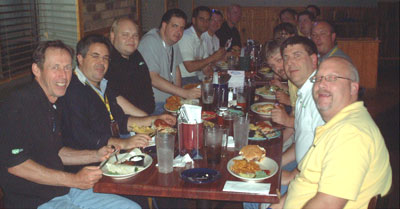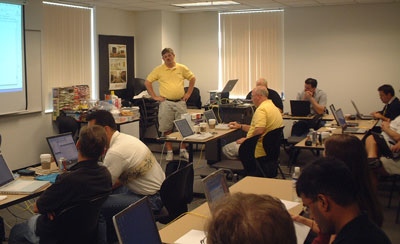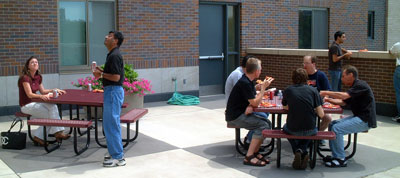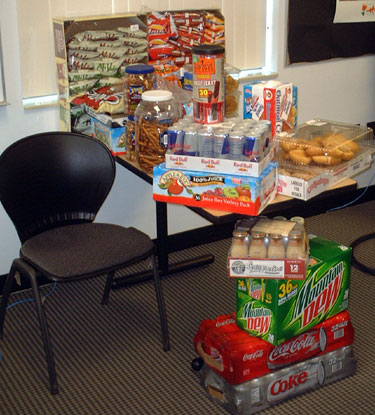One of the things I like best about Dev Jam is how quickly ideas can spread. It’s almost viral. Having a bunch of smart people in a room simply creates a dynamic environment for creativity.
However, one thing I’ve learned while working on OpenNMS is that it is very easy to become insulated, and the environment that is so creative can become stale without the injection of new ideas from the outside.
OpenNMS is a “enterprise-grade” tool, and to us the term is not just for marketing. We aim to become the most flexible and scalable product out there – open source or not. For OpenNMS 2.0 we require some way to both ease integration as well as distribute various functions. To do this we are going to use the Spring framework.
Rather than try to do this on our own, we decided to hire Ben Hale, from Interface21, to come to Dev Jam and teach us about Spring. The name Interface21 comes from a book by Rod Johnson which was the basis for Spring. The book describes “21 Interfaces”, hence the name.
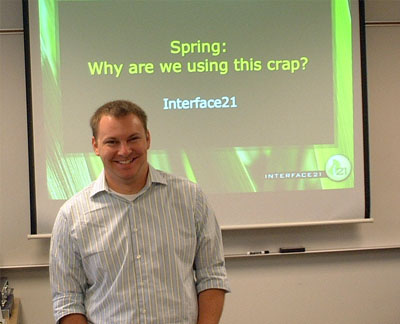
Interface21 is to Spring as The OpenNMS Group is to OpenNMS, and so I am really happy that we can support them and work together (not only are we producers of commercial open source services, we’re users of commercial open source services).
Spring is many things, but at its heart is a lightweight framework that let’s you take Plain Old Java Objects (POJOs), reuse and distribute them without having to write a lot of communication code. We have grand plans for the webUI and distributed pollers that can really take advantage of Spring. It’s obvious that Ben loves Spring as much as we love OpenNMS, so it’s a lot of fun having him around, although when I tried to cram 4 days of training into 2 hours, it was pretty daunting.
